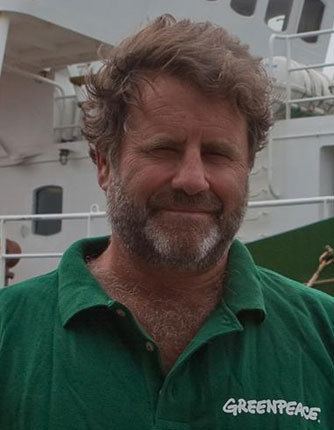Years of service c.1910-1946 Rank Lieutenant-general Name Henry Willcox Allegiance United Kingdom | Died 1968 | |
 | ||
Commands held 15th Infantry Brigade13th Infantry Brigade42nd DivisionI CorpsCentral Command, India Battles/wars World War IWorld War II | ||
Lieutenant General Sir Henry Beresford Dennitts Willcox KCIE CB DSO MC (30 April 1889 – 15 August 1968) was a British Army officer during World War II.
Contents

Early life and military career
Born in New Zealand, Willcox was commissioned into the Sherwood Foresters of the British Army from the New Zealand Military Forces on 20 December 1911. He was posted to the regiment's 2nd Battalion, then stationed in Sheffield.
Shortly after the outbreak of World War I in August 1914, Willcox's battalion, serving as part of the 18th Brigade of the 6th Division, was sent to the Western Front, landing at St-Nazaire, France on 11 September. Just days later the battalion was engaged in heavy fighting and, while still only a second lieutenant, he was appointed the battalion adjutant on 21 September as the previous adjutant had been killed in action. He was promoted to the temporary rank of lieutenant on 21 October 1914 (substantive from 21 November) and awarded the Military Cross (MC) on 18 February 1915. He was promoted to the temporary rank of captain on 1 May 1915, relinquishing this rank on 14 December. Seconded to the staff as a temporary captain on 22 March 1916, he was appointed a brigade major on 29 June and was promoted to the substantive rank of captain on 1 October. He served ultimately as a staff officer with the Egyptian Expeditionary Force (EEF) in 1917. He was attached to headquarters on 9 November 1917. On 16 December 1917, he was appointed a General Staff Officer Grade 2 (GSO2) with the temporary rank of major and was also awarded the Distinguished Service Order (DSO) around this time. He relinquished this post and rank on 1 July 1918 and was reappointed in the same rank and position on 1 March 1919. During the war Willcox was, in addition to being awarded the MC and DSO, wounded twice and mentioned in dispatches five times.
Between the wars
After the war he married, in 1919, and, transferring from the Sherwood Foresters to the East Lancashire Regiment, became a GSO3 in his substantive rank of captain on 25 February 1920. He served initially in Home Forces, then at Aldershot, then in Mesopotamia and Iraq, then at Southern Command and finally attended the Staff College, Camberley from 1925–1926. Among his fellow students there included Ronald Scobie, Philip Whitcombe, Francis Tuker, Roland Le Fanu, Frank Messervy, William Morgan, Raymond Briggs, Gordon Grimsdale, Ralph Deedes, Alan Pigott, John Swayne, Montagu Burrows, Douglas McConnel, Leonard Hawes, William Oxley and Langley Browning. He relinquished his position of brigade major on 5 December 1922, and was appointed a GSO3 on 21 January 1927. On 9 July 1927, he was promoted to major (seniority from 2 June), and brevetted to lieutenant colonel on 1 July 1929. On 21 January 1930, he returned to the Staff College, Camberley upon being appointed a GSO2.
After attending the Imperial Defence College in 1933, and appointed as Commanding Officer (CO) of the 1st Battalion, East Lancashire Regiment, in 1936 he became Assistant Adjutant General for Palestine and Transjordan and in 1937 he was made an Instructor at the Staff College, Quetta in India. He returned to England and commanded the 15th Infantry Brigade in 1938 and, the year after that, the 13th Infantry Brigade. Both brigades formed part of the 5th Infantry Division, whose General Officer Commanding (GOC) was the then-Major General Harold Franklyn.
World War II
He served in World War II, leading the brigade overseas to France in mid-September 1939, shortly after war began, as part of the British Expeditionary Force (BEF). Instead of being involved in immediate action as in World War I, Willcox's brigade, sent initially as an independent formation under GHQ BEF as the 5th Division was not yet fully formed, was relegated to guard duties in the BEF's rear areas in Nantes, with little time being allotted to training for operations. In November, however, after handing over command of the brigade to Brigadier Miles Dempsey, he returned to England and, promoted to acting major general, was made Inspector of Infantry at the War Office. He held this post until mid-June 1940 when he was given his first divisional command, becoming GOC of the 42nd (East Lancashire) Infantry Division in succession to Major General William Holmes.
A first-line Territorial Army (TA) formation then stationed in Yorkshire, the division – comprising the 125th, 126th and 127th Infantry Brigades, plus divisional troops – had recently fought in France and subsequently participated in the Dunkirk evacuation, suffering severe losses in both manpower and equipment, and needed to be brought up to strength to face a potential German invasion of Britain which, in the aftermath of the French surrender, was considered highly likely. The division, then serving in Northern England under X Corps, was rapidly brought up to strength in men by absorbing thousands of conscripts – few of whom had had any prior military experience – although still very short on equipment of all sorts and, throughout the year and into 1941, the division moved numerous times around the country, alternating between beach defence and training to repel the expected German invasion.
Willcox remained with the 42nd Division until late April 1941 when, after handing over the division to Major General Eric Miles, he was promoted to the rank of acting lieutenant general and became GOC of I Corps, succeeding Lieutenant General Laurence Carr, then with the 1st and 2nd Infantry Divisions (commanded by Major Generals Edwin Morris and Daril Watson, respectively) under control. The corps was stationed in Northern England under Northern Command and was responsible for the defence of Lincolnshire and the East Riding of Yorkshire. However, in October 1941, General Sir Alan Brooke, the Commander-in-Chief, Home Forces, believed Willcox to be out of his depth, claiming him to be "quite incapable of handling the forces under orders" and, several months later, in May 1942, had him replaced by Lieutenant General Frederick Morgan, a much younger man. Willcox was then sent to India to become GOC Central Command, India and, in 1944, he became Chairman of the Indian Army Reorganisation Committee, set up to consider India's postwar needs.
Postwar
After a military career spanning three decades, and with the war over, Willcox retired from the army in August 1946, retaining the honorary rank of lieutenant general. He was Colonel of the Sherwood Foresters from 1946 to 1947.
